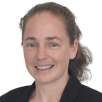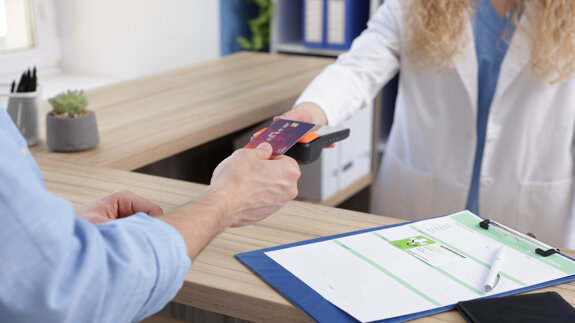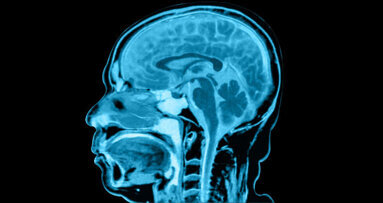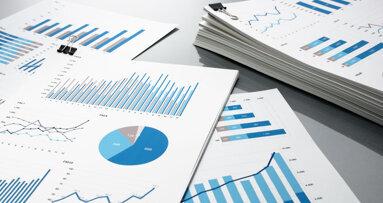LONDON, England: A new national campaign led by ORDO is urging the UK government to abolish the so-called “tooth tax” by removing VAT from children’s toothbrushes and toothpaste, as evidence mounts of a deepening oral health crisis affecting families across the country. Campaign leaders argue that taxing basic oral hygiene products is undermining prevention efforts at a time when children’s dental health is already under severe strain.
ORDO, working alongside the Dental Wellness Trust and the Oral Health Foundation, argues that children’s oral care products are essential items and should be treated in the same way as other zero-rated necessities such as children’s clothing and nappies. The fact of millions of children growing up in relative poverty leads campaigners to say that the current 20% VAT places unnecessary financial strain on households and contributes to widening health inequalities.
New survey data commissioned by ORDO in October 2025 among 2,000 parents in the UK reveals strong public backing for reform. A large majority believe children’s toothbrushes and toothpaste should be VAT-exempt, while half of parents report that the cost of these products has become unaffordable. Almost half say their children have needed medical attention for an oral health issue in the past year, underlining the scale of the problem.
The campaign, called Teeth of Tomorrow, comes against a stark public health backdrop. Government figures show that dental caries remains one of the most common chronic conditions among children, leading to pain, missed school days and long-term health consequences. Hospital admissions for caries continue to place pressure on the NHS, and clear regional disparities arise, as areas such as London and the North West are affected most severely.
To drive change, ORDO has brought together dental professionals, charities and local authorities, and launched a national petition calling on the government to remove VAT from children’s oral hygiene products. The petition aims to secure 10,000 signatures, the threshold required to trigger an official government response.
Commenting on the campaign and the accompanying petition, Barty Walsh, founder and CEO of ORDO, stated that: “ORDO is proud to unite this passionate collective to spotlight a growing issue affecting families nationwide—and to launch a petition calling for meaningful change. The stories we’ve heard from dental professionals, charities and local authorities underline the urgency of the situation: Too many families are struggling to access essential oral care products. Every child deserves the basic tools for a healthy start in life. Oral care isn’t a luxury—it’s a necessity.”
Echoing these remarks, Dr Linda Greenwall, founder of the Dental Wellness Trust charity, commented that: “Preventable dental caries remains the leading reason for hospital admissions among children in the UK. This is a public health challenge that disproportionately affects our most vulnerable families, deepening health inequalities. Poor oral health often leads to significant pain and discomfort for children, impacting their ability to eat, sleep and concentrate at school, and for many leading to a loss of confidence that can affect their social development and wellbeing. Removing VAT from essential oral hygiene products would be a hugely impactful step, and it’s clear that there is overwhelming public support for this move.”
The campaign highlights a clear opportunity for government action to reduce health inequalities and prevent avoidable suffering among children. Removing the tooth tax would be a simple, popular step towards giving every child a fair and healthy start in life.
Topics:
Tags:
WELLINGTON, New Zealand: New Zealand’s public oral health system is facing growing pressure as increasing numbers of children wait extended periods for ...
LEEDS, England: As a crucial dimension of the overall oral health crisis continuing to rankle across the UK, children’s access to NHS dental care and ...
ROCHESTER, N.Y., US: In what is thought to be the first study to directly link prenatal stress hormones with primary tooth eruption, researchers in the US ...
LONDON, England: The structural asymmetries that pervade society as a whole are inevitably reproduced within specific industries, dentistry being no ...
OSLO, Norway: Alleviating stress for fearful dental patients, especially vulnerable ones such as children, is of paramount concern for dentists. Now, a ...
Live webinar
Wed. 14 January 2026
5:00 pm UTC (London)
Dr. Théo Laplane, Dr. Robert Gottlander DDS
Live webinar
Fri. 16 January 2026
5:00 pm UTC (London)
Live webinar
Mon. 19 January 2026
6:00 pm UTC (London)
Philipp Kopp, Michael Seeber
Live webinar
Thu. 22 January 2026
2:00 pm UTC (London)
Prof. Judith Jones D.D.S; M.P.H., Prof. Kakuhiro Fukai D.D.S., Ph.D, Dr. Bathsheba (Bethy) Turton
Live webinar
Thu. 22 January 2026
7:00 pm UTC (London)
Dr. Nicola M. Grande DDS, PhD
Live webinar
Wed. 28 January 2026
1:00 pm UTC (London)
Live webinar
Wed. 28 January 2026
4:00 pm UTC (London)
Prof. Dr. Jan-Frederik Güth



 Austria / Österreich
Austria / Österreich
 Bosnia and Herzegovina / Босна и Херцеговина
Bosnia and Herzegovina / Босна и Херцеговина
 Bulgaria / България
Bulgaria / България
 Croatia / Hrvatska
Croatia / Hrvatska
 Czech Republic & Slovakia / Česká republika & Slovensko
Czech Republic & Slovakia / Česká republika & Slovensko
 France / France
France / France
 Germany / Deutschland
Germany / Deutschland
 Greece / ΕΛΛΑΔΑ
Greece / ΕΛΛΑΔΑ
 Hungary / Hungary
Hungary / Hungary
 Italy / Italia
Italy / Italia
 Netherlands / Nederland
Netherlands / Nederland
 Nordic / Nordic
Nordic / Nordic
 Poland / Polska
Poland / Polska
 Portugal / Portugal
Portugal / Portugal
 Romania & Moldova / România & Moldova
Romania & Moldova / România & Moldova
 Slovenia / Slovenija
Slovenia / Slovenija
 Serbia & Montenegro / Србија и Црна Гора
Serbia & Montenegro / Србија и Црна Гора
 Spain / España
Spain / España
 Switzerland / Schweiz
Switzerland / Schweiz
 Turkey / Türkiye
Turkey / Türkiye
 UK & Ireland / UK & Ireland
UK & Ireland / UK & Ireland
 International / International
International / International
 Brazil / Brasil
Brazil / Brasil
 Canada / Canada
Canada / Canada
 Latin America / Latinoamérica
Latin America / Latinoamérica
 USA / USA
USA / USA
 China / 中国
China / 中国
 India / भारत गणराज्य
India / भारत गणराज्य
 Pakistan / Pākistān
Pakistan / Pākistān
 Vietnam / Việt Nam
Vietnam / Việt Nam
 ASEAN / ASEAN
ASEAN / ASEAN
 Israel / מְדִינַת יִשְׂרָאֵל
Israel / מְדִינַת יִשְׂרָאֵל
 Algeria, Morocco & Tunisia / الجزائر والمغرب وتونس
Algeria, Morocco & Tunisia / الجزائر والمغرب وتونس
 Middle East / Middle East
Middle East / Middle East





































































The ultimate reason why root canals fail is bacteria. If our mouths were sterile there would be no decay or infection, and damaged teeth could, in ways, repair themselves. So although we can attribute nearly all root canal failure to the presence of bacteria, I will discuss five common reasons why root canals fail, and why at least four of them are mostly preventable.